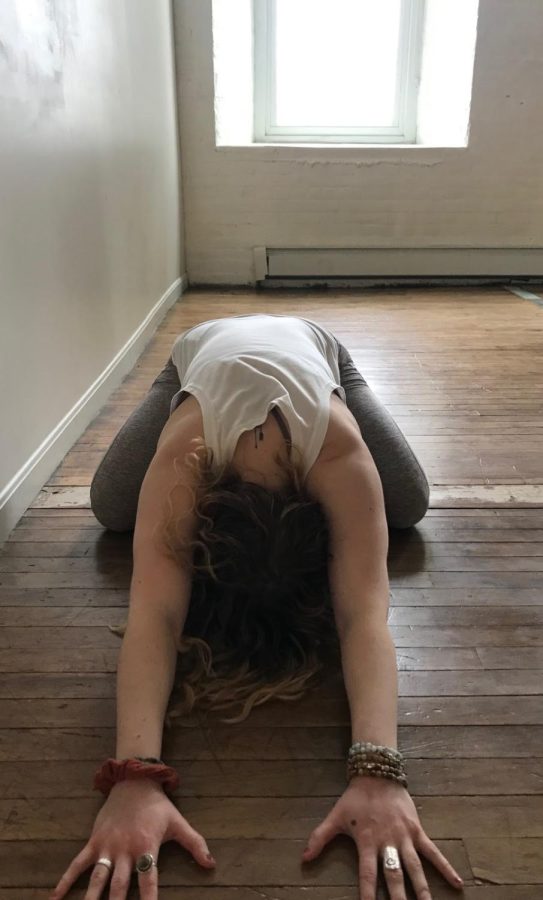Yoga poses to help reduce stress, anxiety
March 7, 2019
Forty-five percent of college students who pursued counseling in 2017 reported experiencing stress, while 61 percent reported having anxiety, according to the American Psychological Association. Yoga is becoming a popular way to reduce stress and anxiety because participants can focus on themselves and their breathing.
Megan Emerson, a teacher at One Love Yoga, and Tim Huth, the owner and a teacher at One Love Yoga, recommend these five yoga poses to do at home to help students reduce their stress and anxiety:
1. Child’s pose
Child’s pose closes one in and makes one feel protected and safe, Emerson said.
It allows a person to control their breath easier because they can’t see anything.
Child’s pose also has a grounding posture, which can be very calming, Huth said.
2. Legs up the wall
Legs up the wall can help slow one’s heart rate and promote sleep.
“If your bed is up against a wall, you can just put your legs up and you’re relaxed,” Emerson said. “You can place one hand on your heart and one on your belly and feel yourself breathing, that way you can see like ‘okay, my heart rate is slowing down.’”
This pose can also help one move into the parasympathetic nervous system, or a relaxed state, rather than the fight-or-flight state.
3. Alternating nostril breathing
Alternating nostril breathing can help a person better maintain his or her breathing because it makes one think about each breath, Emerson said.
Alternating nostril breathing also helps create a system or pattern of one’s breath.
Alternating between the two nostrils can help balance the body and promote belly breathing, which can help one get into the parasympathetic nervous system, Huth said.
4. Crocodile pose
Crocodile pose helps with breath control because one can feel their stomach press against the floor.
“I always notice my breath coming out of my nose, hitting the floor and creating a heat,” Emerson said.
It helps one not only notice their breath, but it also helps one breathe through their stomach to get one into the parasympathetic nervous system.
5. Cow and cat poses
Alternating between the cow and cat poses is a good form of movement meditation.
It can help occupy a person’s brain getting one to concentrate on the movement of their spine and breath rather than what they are stressed or anxious about, Emerson said.
Jade Critchfield covers health and fitness. Contact her at [email protected].

























